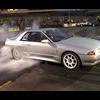Announcements
-
Similar Content
-
Latest Posts
-
There is a LOT of stuff that can be done, it all depends on how much time and money you want to spend on doing in. Not all ECUs will be able to do it, and the more control you need the more time and knowledge needs to be put into making it work. If you're willing to spend the time and money and have the right hardware and skills involved there's a lot that can be done.
-
I am impressed with all this level of adjustment. I didn't expect all this possibility
-
Correct. In the case of the 500kw dyno plot I showed you the car actually runs two boost control solenoids for boost control and a 5psi wastegate spring. It allows me to control how much boost pressure is applied to both sides of the wastegate valve at any point and fairly accurately control boost target as a result. I've tuned it so that it's able to target anywhere from 5psi to 25psi depending on what's needed. The target tables I've set up in that car are Gear vs RPM, so every gear has potential for a different boost (and torque) curve. First and second gear have quite low boost targets, third gear actually has different target boost all the way through the rpm range as it's a stock RB25 gearbox - the boost targets have been chosen to maintain a peak of 600nm (what the owner has set as the maximum torque he's happy with putting through the stock 3rd gear) but it carries that to the rev limiter. The boost curve to achieve that is something of a ramp up, then hold, then ramp up again and the power curve looks more like a flat line haha.
-
so you can decrease or increase the boost depending on the diet as you wish? by acting on the wastegate?
-
That's torque and power, it's all from a single run. The boost curve is "held back" from it's peak target in the 3500rpm to 5000rpm range from memory, so it ramps hard to something like 18psi then climbs more progressively to 23psi nearer 5000rpm. It makes the torque (and power) ramp more "natural" and less hard on parts and traction, it doesn't feel artificially held back.
-



Recommended Posts
Create an account or sign in to comment
You need to be a member in order to leave a comment
Create an account
Sign up for a new account in our community. It's easy!
Register a new accountSign in
Already have an account? Sign in here.
Sign In Now